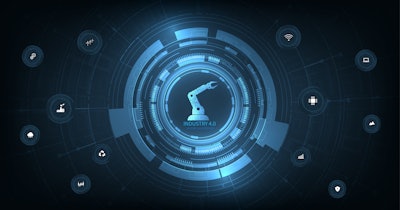
Walk into any modern factory, and you’ll find two distinct worlds humming side by side. On one side, servers and dashboards crunch data at lightning speed; on the other, conveyor belts and robotic arms keep products moving with clockwork precision. Yet despite their shared mission, Information Technology (IT) and Operational Technology (OT) teams often operate as if separated by an invisible wall; a division that’s becoming increasingly costly and unmanageable for U.S. manufacturers.
The outcome of this divide is unnecessary complexity, delays, and miscommunications between the two worlds.
The Costs of a House Divided
Recent trends underscore what’s at stake. According to Orange Cyberdefense, nearly half of all cyberattacks targeting OT systems worldwide now strike U.S. companies. These aren’t just digital annoyances; when attackers gain access, they can potentially manipulate machinery, halt production, steal confidential information, or even endanger worker safety. The financial impact of such breaches can be staggering, with some incidents resulting in millions of dollars in losses due to downtime, ransom payments, and unquantifiable damage to corporate reputation.
But the IT/OT divide isn’t just about security risks. When teams don’t collaborate, opportunities for innovation and continuous improvement are lost. Working in silos leads to duplicated efforts, slow responses, and missed chances to optimize everything from production and maintenance to supply chains and energy use. In today’s hyper-competitive market, those inefficiencies can mean the difference between leading the pack and falling behind.
Why the Disconnect?
At its core, the IT/OT gap is less about technology and more about people and culture. Misaligned priorities and a lack of understanding between the two groups are mainly what prevents them from working together efficiently
Historically, IT and OT have always operated in silos. IT departments manage data, applications, and enterprise networks, focusing on digital transformation, scalability, and risk mitigation. OT teams, meanwhile, are tasked with ensuring the reliability and safety of production lines, often relying on legacy equipment and established routines. Their primary concern is uptime: Any disruption, even for beneficial upgrades, can threaten output and safety. This risk-averse mindset is understandable, given that even minor interruptions can have cascading effects across manufacturing processes, impacting everything from quality control to delivery schedules.
This difference in focus breeds mistrust. IT initiatives may be seen by OT as theoretical or risky, while IT professionals may view OT’s caution as resistance to progress. Traditionally, the IT world changes rapidly, whereas OT is slower to change due to legacy systems that cannot be upgraded easily or are expensive to update. As a result, OT tends to work with older machinery and faces more legacy constraints while juggling the evolving IT landscape and technologies. This adds another layer of disconnect between the IT and OT worlds especially on the cybersecurity front where the attack landscape is rapidly evolving.
Secondly, there is also a disparity in mindsets. They have different approaches and different technical languages—sometimes so much so that they might not realize they are both tackling the same problem. This only leads to misunderstandings and stalled projects. Lastly, organizational structures frequently align to these silos, with separate reporting lines and physical separation further complicating communication. Consequently, and most importantly incentive structures often reinforce this divide, with each team rewarded for meeting its own goals rather than collaborating toward shared business outcomes.
Compounding all these issues is the reliance on outdated infrastructure. Many manufacturing environments still depend on legacy OT systems to avoid the perceived security risks associated with newer IT products. The irony is that these systems are more difficult to patch or update.
From the OT perspective, any new update is a potential wildcard that could disrupt their finely tuned operations. Think back to that faulty CrowdStrike software update from 2024 that led to a global outage affecting approximately 8.5 million Microsoft Windows users. OT personnel see that and say, “No thanks.” It's also not as simple as just layering traditional IT security protocols on top of OT. New, customized software patches are required, which can be quite risky to implement. Moreover, the lack of visibility in OT environments makes it harder for IT teams to assess vulnerabilities and respond effectively to incidents, increasing overall organizational risk.
A Path Forward: Technical and Cultural Integration
Overcoming the IT/OT divide requires a holistic approach that addresses both technological and human factors.
- Standardization: It is essential for a company to create internal standards not just locally but globally across all divisions. This allows for more efficient systems to be designed, built, and maintained, ultimately optimizing the landscape, enabling easier training and use of internal resources, and securing the asset landscape. Without standards, it is impossible to have well-functioning, optimized collaboration and production.
- IT/OT Assessment: Don’t rip out legacy systems without a thoughtful plan and plenty of time built in. An IT/OT assessment can produce an effective roadmap for prioritizing upgrades based on risk and business value, ensuring that any work aligns with your existing data strategy. Start with the fundamentals and keep building on top of them. Pilot projects can serve as proof points, demonstrating tangible benefits and helping to overcome skepticism among stakeholders. Celebrate those early successes and promote them internally within the organization. This will help build incremental buy-in and further advance the modernization project along from one to multiple factories.
- Security by Design: Make cybersecurity a shared responsibility from day one. Conduct joint risk assessments, establish clear protocols, and ensure both IT and OT voices are heard when designing safeguards. Regular training and simulated incident response exercises can help prepare both teams for emerging threats, fostering a culture of vigilance and resilience. Cybersecurity is essential but cannot compromise production, and this is often forgotten. Only by creating multidisciplinary teams with members from IT, OT, and cybersecurity departments can this gap be bridged, resulting in secure systems that do not compromise what’s ultimately most important: production.
- Shared Vision: Leadership must champion a unified strategy for synergy, setting clear goals that matter to both sides; whether it’s reducing downtime, boosting productivity, or protecting intellectual property. Management programs should prioritize retraining, communications, and building trust across teams. Encourage open dialogue, empathy, and mutual understanding between the two sides. Initiatives such as workshops, cross-training, and site visits can promote this cultural shift. Forming cross-functional teams can help eliminate a silo mentality and get people with the same priorities on the same page.
- Equally important is addressing the lack of structured governance between IT and OT, which often results in each team being measured by different KPIs and success metrics. Without a unified governance framework and shared performance indicators, collaboration remains superficial and strategic alignment is difficult to achieve. Structured governance with harmonized KPIs will ensure both IT and OT are working toward the same business outcomes, reinforcing accountability and driving true integration.
- Common Data Strategy: Organizations should adopt open, vendor-neutral architectures, often referred to in OT as a Unified Namespace. This approach enables seamless correlation and sharing of data from both IT and OT environments across departments. Establishing a unified data strategy lays the foundation for truly data-driven factories, unlocking advanced analytics, improved decision-making, and greater operational efficiency.
If we look at all this as the glass being half full, this is an opportunity to reimagine how people, processes, and technology work together to drive sustainable growth. Those who embrace this integration will be best positioned to thrive in a rapidly changing industrial landscape, ensuring their competitiveness and security well into the future. The time to act is now; the future of American manufacturing depends on it.
Farès Sakka is director of smart industries, Americas at Orange Business.






















